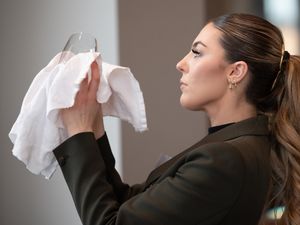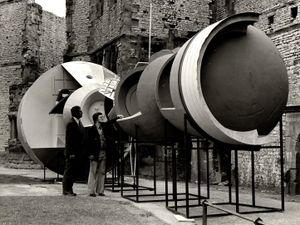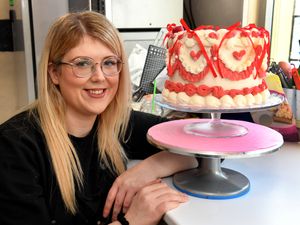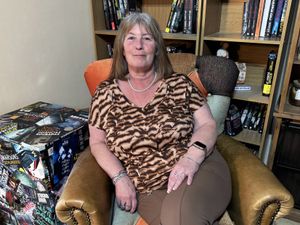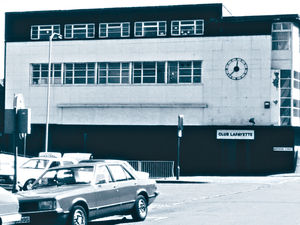Are we ready for the revival of another cooking show?
During a show in the West Midlands, Scouse funnyman Stan Boardman offered an explanation as to why he was rarely on television these days.
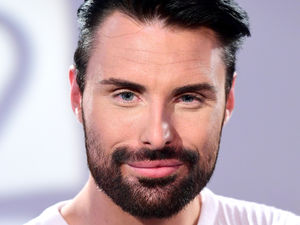
"I can't cook, and there's nothing in my attic," he observed wryly.
Well, Stan, you're not going to like this one bit. One of the shows which started the craze for cookery programmes in the mid 1990s is returning after a 10-year absence, with a reality television star serving as its frontman.
Ready Steady Cook returns on Monday, and will be fronted by former X-Factor contestant Rylan Clark-Neal. The original show ran for an incredible 21 series from 1994 to 2010, and launched the TV careers of Anthony Worrall Thompson, James Martin and Gino D'Campo.
But more than that, along with MasterChef that first appeared four years earlier, Ready Steady spawned a whole plethora of cookery-based shows which have come to dominate the schedules over the past couple of decades. Can't Cook, Won't Cook, Hell's Kitchen. Big Cook, Little Cook, Dinner Dates, The F-Word. Great British Menu, Paul Hollywood's Pies and Puds, Saturday Kitchen, Sunday Brunch. Heston's Feasts, Nadiya's British Food Adventure. It's fair to say that TV cookery shows have come a long way since the days of Fanny Craddock and Delia Smith.
But while they are unquestionably popular, it does beg the question of whether the market has reached saturation point. A 2014 study found that British television was screening 434.5 hours of cookery programmes – or 18.5 days – in a single week. A separate survey, two years later, found that the average person spent more time consuming 'food media' than they actually did in the kitchen. It seems we can't get enough of watching other people cooking.
Back in the mid-90s, MasterChef and Ready Steady approached cookery from the opposite ends of the spectrum. In its original form MasterChef, fronted by Loyd Grossman, was earnest and artistic, challenging talented amateur chefs to produce gourmet meals. Ready Steady, on the other hand, was a populist reality show where professional chefs were challenged to produce dishes out of ingredients purchased by members of the public. In the early episodes, contestants were limited to a budget of £5, but the new series will see this increase to a more generous £10, although the £3.50 budget will be retained for the 10-minute challenges.
The new version will feature five professional chefs, and many of these will already be familiar to some viewers. Mike Reid and Ellis Barrie have previously presented Great British Menu, while Romy Gill is already well established as a cookery writer. Akis Petretzikis actually fronted the Greek version of Ready Steady Cook, while Anna Haugh was head chef at Gordon Ramsay's London House restaurant.
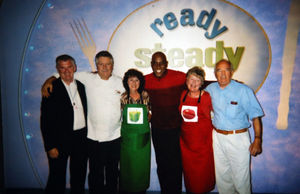
Tina Hobin, from Mamble, near Kidderminster, was one of the last contestants on the show when Ainsley Harriott was the presenter, and remembers it as being great fun.
"It was fantastic, I loved it," says the 79-year-old belly-dancing instructor, who appeared in 2010.
"Ainsley was great fun, he was always smiling.
"He put on a dance, he did a bit of belly dancing."
Tina says while it appeared to be light-hearted, the chefs were also under intense pressure.
"It was quite tiring, everything was very fast. I couldn't believe the way they could cook a meal in about 15 minutes, I thought 'how do they do that?'
Mary Walker, from Shrewsbury, walked away with the top prize when she appeared in 2008 alongside chef James Martin. She provided James with a coconut, a mango, raspberries, Shrewsbury biscuits, almonds and a bag of Maltesers. James cooked a cold alaska pudding with the ingredients.
One thing that has changed since the days of Fern Britton and Ainsley Harriott is that the new series will feature a greater emphasis on environmental concerns.
Clark-Neal, who was runner-up on Celebrity Masterchef in 2015, says: “There’s a real focus on sustainability so, for example, we have three bins on set, so that we can make sure food waste and recycling goes where it’s meant to go."
Of course, it's easy to see why TV companies love cookery shows. A tried-and-tested formula, and relatively cheap to make, they are also popular with advertisers in the culinary sector, and offer tremendous commercial spin-offs such as cookery books and live events.
But what is the appeal of these shows for viewers? On one level, they are easy-to-watch reality TV, but also with an aspirational and educational dimension. People who would never have the time or skills to prepare a gourmet three-course meal can instead watch a top chef doing just that, while eating a Vesta curry from their lap tray.
But Tina Hobin also thinks part of the appeal lies in the different personalities, and their determination to outperform their rivals.
"I think it's the competitive side to it that makes it enjoyable," she says.

